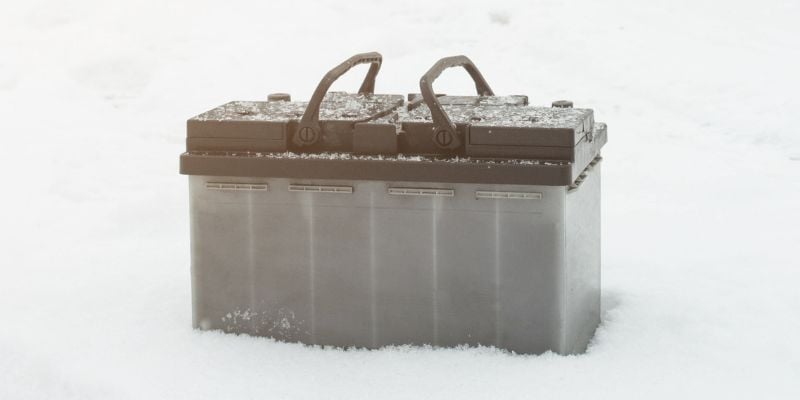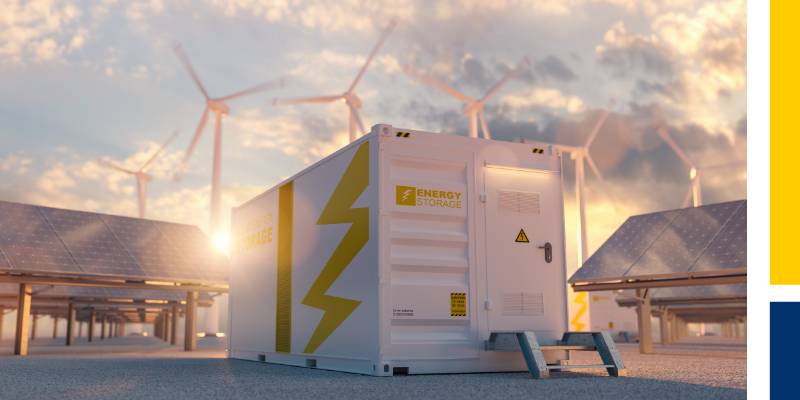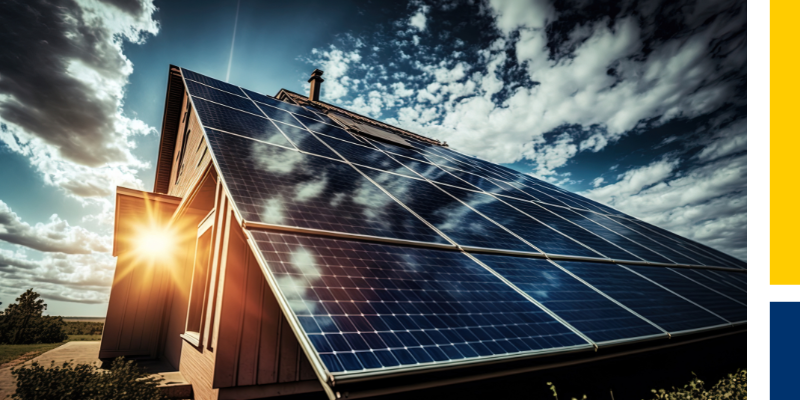Winter snow, ice, and wind = downed power lines. Here’s how to select, prep, and maintain emergency batteries — and keep the lights on when the power goes off:
Without electricity in the winter, your entire day is disrupted – and your heater won’t work.
You can’t use your refrigerator, lighting, sump pump, computer, or the internet
You can’t run a business or take care of your family.
And you’ll lose your heating if you use an ultra-efficient cold-climate heat pump or a conventional gas furnace. (Even gas furnaces need electricity to power fans.)
Fortunately, emergency batteries can help you avoid power outages altogether.
In this article, you’ll learn how to protect yourself from winter power outages, including:
- Your goals: Why do you need emergency batteries?
- What kind of battery system do you need?
- Why cold weather harms batteries – and what to do about it
- Don’t start with batteries (start here instead)
- Preventative maintenance – and longer battery life – made easy
- How emergency batteries can save you money year-round
Why do you need/want emergency batteries?
Batteries provide clean, reliable, low-carbon energy. And unlike fossil fuel-powered generators, there is no air pollution, noise, or high maintenance requirements.
Generally speaking, people choose emergency batteries to:
- Power small electronics: Here, a portable battery bank is typically sufficient. These handheld devices can charge phones and tablets several times before needing to be recharged – buying you time in case of a shorter outage.
- Run critical appliances/equipment such as medical devices, laptops for remote work, refrigerators, heating blankets, etc. Uninterruptible power supply (UPS) systems may be adequate for short outages and smaller appliances. For higher power draws or extended outages, you’ll need higher capacity, deep-cycle batteries like Crown manufacturers, and an inverter to convert the batteries’ electricity into a form you can use at home.
- Power your entire home: You’ll want a home battery. Home batteries range in size (capacity) from a few hours’ backup power to renewable energy-connected systems that can power your home indefinitely – without relying on the power grid.
Once you’ve determined your goals, you’re ready to select batteries.
What kind of batteries do you need?
We always recommend rechargeable batteries to power small electronics because their lifetime cost is far lower, resulting in a fraction of the waste of single-use batteries.
You'll need a deep-cycle battery bank if you’re looking to power critical appliances or HVAC equipment – or your entire house or business.
Recyclable, flooded lead-acid (FLA) batteries are the most common high-capacity emergency batteries and offer:
- Strong reliability, proven in millions of homes, along with hospitals, off-grid schools, and military bases
- 100+ years of safety in homes with zero risk of 24+ hour thermal runaway
- 30%-90% lower costs than other battery types
- 99% recyclability, per the US Environmental Protection Agency’s (EPA) “Advancing Sustainable Materials Management”
- Extended lifespans of 10+ years are possible with correct selection and proper battery sizing, storage/housing, usage, and maintenance.
Note that FLA batteries require venting and a few minutes of monthly maintenance, including watering.
Absorbent glass mat (AGM) batteries are near-zero maintenance and engineered for aerospace applications. These sealed batteries offer enhanced longevity, faster charging, and high current delivery. They’re also 99% recyclable and safe in homes.
Both FLA and AGM batteries have decades of safe, economical, real-world use. Look for models whose engineering includes 3D printing, computer-aided modeling, and automated assembly at critical stages.
Lithium-ion (LI) batteries have less market share but also offer near-zero maintenance. Since LI batteries have the highest power density (more energy in a given space), there’s a much higher risk of thermal runaway that leads to home fires. LI models are typically three times as expensive as equally powerful FLA models.
Your batteries can help protect you from the cold – but only if they’re installed correctly
Operating batteries near or below 32°F (0°C) increases a battery’s internal resistance and lowers usable capacity. Low temperatures can even decrease battery life or kill batteries outright.
Store batteries in a cool, dry location that’s around 60°F (15°C) to protect them. Consult your manufacturer’s guidelines for ideal storage temperature ranges. Be sure to ventilate batteries properly. And never store batteries directly on the ground or floor. Instead, use an insulated rack or slab to ensure optimal temperature.
Before you size batteries, do this:
The less energy your batteries have to deliver, the smaller and more affordable the batteries can be.
Whether using your emergency batteries for a few hours’ backup or multi-day, whole-house protection, save yourself money and start by improving your home’s energy efficiency.
To get started, check out our in-depth guide, “How to Reduce Off-Grid Electrical Demands.”
Maintenance, the easy way:
Batteries last longer and stay ready when they’re maintained.
Here’s what we recommend:
- Block out time for periodic inspections at whatever interval your manufacturer recommends. This way, you’ll catch problems early and save time and money.
- Monitor battery health: Monitoring one deep-cycle battery may be as easy as occasionally checking battery health and charge levels. But for larger systems such as whole-house batteries, consider installing a Battery Management System (BMS). These computerized monitoring systems check battery health 24/7 and may even allow remote dashboards or push notifications.
- Follow your manufacturer’s recommendations for inspecting batteries, cables, and terminals.
- Clean terminals if you see corrosion.
- Check fluid (electrolyte) levels for FLA batteries and fill them as needed.
What’s Next?
With the information you’ve learned, you’re ready to protect yourself from winter power outages – and save time, money, and energy.
To learn more, check out the following resources:
- Home Battery Basics: How to Get Started
- 7 Tips for Supercharging Renewable Energy Battery Performance
- Use your Home Battery to save on your electric bill: Peak Shaving: Lower Energy Costs with an Efficient System











